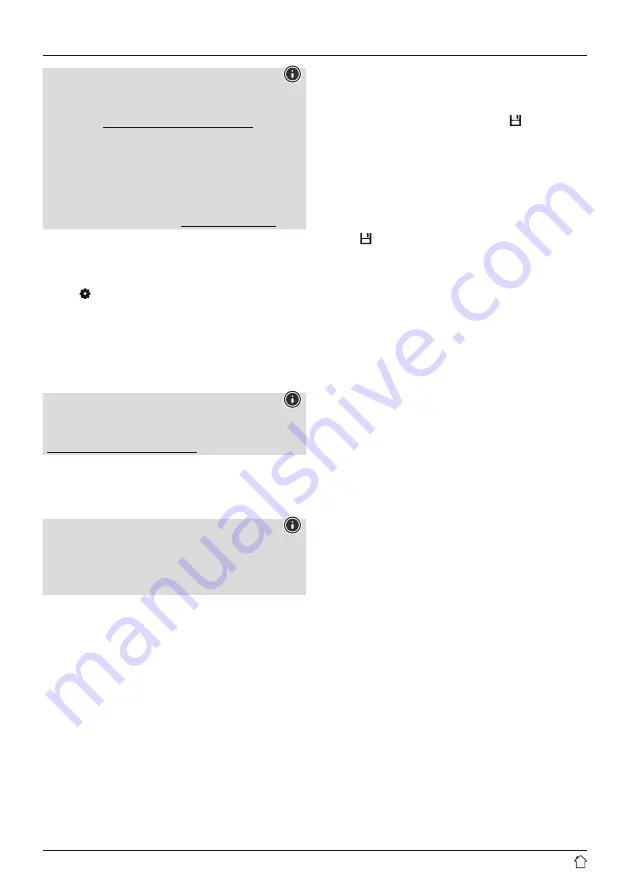
14
Note
The list of stations contains all stations that were found
on the last station search. A further station search - as
described in
- can
be started. A station's reception quality depends on
factors such as the weather, location and orientation
of the aerial. If a station shown in the list of stations is
not available, changing the orientation of the aerial or
the location of the radio may help. Stations that are no
longer available can be removed from the
list of stations as described in
9.3 Edit station list
To remove stations that are not currently in the reception
area, from your station list, proceed as follows:
•
Press [ ] (4) to access the Settings menu.
•
Use [
NAVIGATE/ENTER
] (9) to navigate to the "Delete
inactive stations" menu item.
•
Confirm the selection by pressing [
NAVIGATE/ENTER
].
If you answer
YES
, then all currently unavailable stations
will be removed from the station list.
Note
To keep the list of stations up to date, we recommend
updating the list regularly with a full station search (see
9.4 Presets
You can save up to 30 of your favourite stations for quick
and direct access.
Note
Presets cannot be deleted. If all 30 station memory slots
are filled and you wish to save a new station, choose
one of the occupied slots. The station in this slot will be
overwritten with the new station.
9.4.1 Assigning the list of presets (1-30)
•
Set the station that you would like to save to a presets
memory slot.
•
If the station is playing, press and hold
[ ]
(2) for
approx. 3 seconds until the Presets list opens up.
•
Navigate to the preferred memory slot and confirm your
selection by pressing [
NAVIGATE/ENTER
].
•
The selection will be confirmed by the display showing
"Program (1-30, depending on the memory slot) saved".
9.4.2 Calling up a station from the presets list (1-30)
•
Press
[ ]
to call up the Presets list.
•
Use [
NAVIGATE/ENTER
] to navigate to the preferred
station and confirm your selection by pressing
[
NAVIGATE/ENTER
].
9.5 DRC (Dynamic Range Control)
Some DAB network radio stations support a volume control
feature that actively takes effect during playback. If the
volume suddenly increases, DRC automatically lowers it. If
the volume suddenly becomes quieter, DRC automatically
raises it. The same happens when playback is suddenly
quiet. The radio then increases the volume again.
DRC high:
total equalisation of different volumes. Strong
compression can audibly reduce the dynamics of a music
title.
DRC low:
partial equalisation of different volumes. More
subtle compression, without too much loss of dynamics.
DRC off:
no equalisation
Содержание DIR3030BT
Страница 2: ...A B 2 3 4 5 1 6 7 8 9 2 1 3 4 5...











































